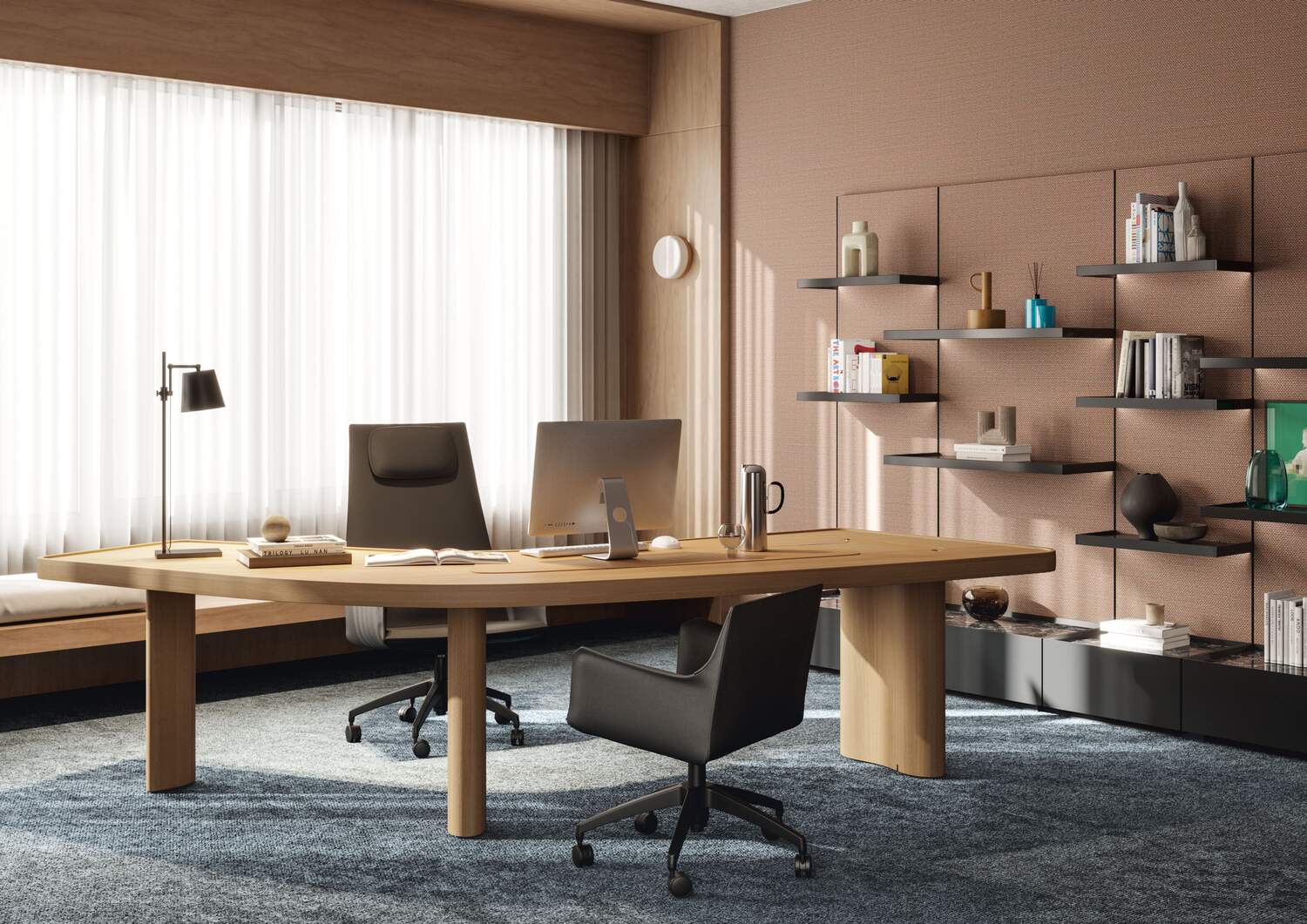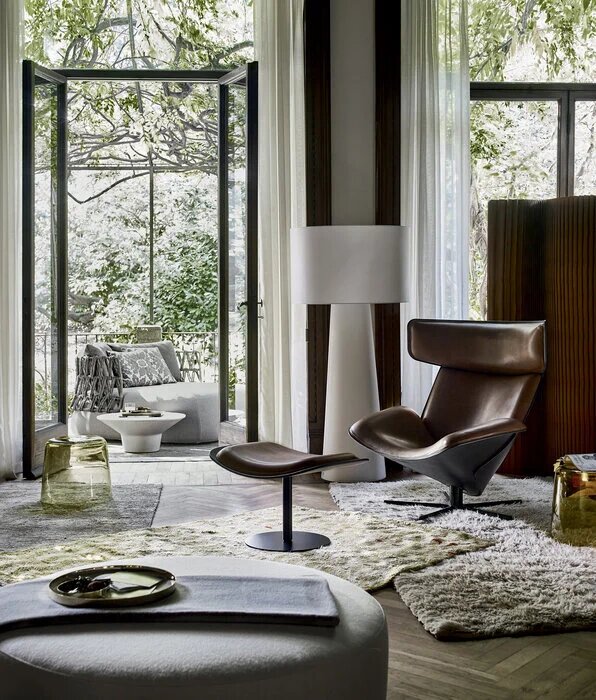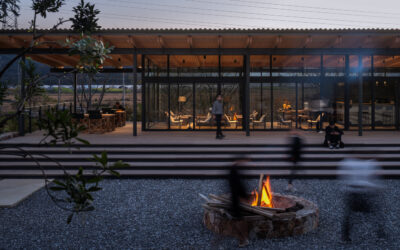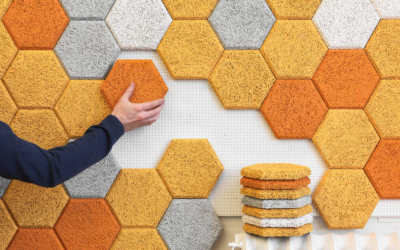NEWS
TDC Building: In-Depth Look at the Development and Completion of this Remarkable Contract Project
Interior design goes far beyond aesthetics, and it is in this sense that ergonomics plays a fundamental role. Ergonomics focuses on designing spaces that are comfortable, safe and efficient for their users. In simple terms, it involves adapting the design of objects and environments to meet the physical and psychological needs of the people who use them. In interior design, it is considered essential to creating spaces that are safe, comfortable and efficient for their occupants; so we will explore in detail the benefits of including it in your design process and some useful tips for creating spaces that are comfortable and aesthetically pleasing.
Ergonomics in interior design
Ergonomics is an important consideration in interior design because it has a great impact on the experience of the users and occupants of the space. When designing ergonomic spaces, the aim is to create an environment that adapts to the physical and mental needs of the people who use it; focusing on aspects such as furniture arrangement, use of space, lighting, acoustics and temperature. These elements can directly affect the comfort, health and safety of the users of the space.

Escritorio Bureau Boomerang, Cassina.
When designing an ergonomic space, a balance between visual appearance and functionality is sought. For example, when choosing an office chair, the designer must consider not only its appearance, but also its ability to provide support and comfort during long hours of work. Similarly, when designing a kitchen, the designer must consider the height of appliances and work surfaces to avoid muscle strain and fatigue.
Ergonomic design can also have a positive impact on the productivity and efficiency of space occupants. By providing a space that is comfortable and safe, fatigue, stress and absenteeism can be reduced, which can increase productivity and job satisfaction.
Considerations for ergonomic space design
As an architect, it is important to consider several aspects when designing an ergonomic space to ensure that it is efficient for its users. Here are some key considerations to keep in mind when designing an ergonomic space:
1. Consider the height of the users:
It is important to design the space according to the height of the users. For example, tables and chairs should be adjustable in height to accommodate different users. In addition, door handles, light switches and other access elements should be placed at a suitable height for the people living in the home.

Cocina Riciclantica, Valcucine.
2. Provides sufficient storage space:
Storage space is also crucial to the ergonomics of a space. It is vital to provide sufficient storage space for tools and supplies; making sure they are easily accessible and organized. Clutter and lack of storage space can increase muscle strain and reduce productivity.
3. Consider the lighting design:
Another important factor to consider is proper lighting, which is essential for the visual and mental health of the occupants of the space. Optimal lighting design can reduce eyestrain, improve concentration and increase productivity. It is important that the space has sufficient natural and artificial light, as well as the ability to adjust the intensity and color of light to suit individual needs.
4. Design a space that encourages movement:
Movement is essential to the health and well-being of space users. Designing a space that encourages movement can help reduce fatigue and stress. For example, a stretching area or standing work area can be included in the office to encourage circulation and physical activity.
5. Consider the acoustics:
Proper acoustics can reduce ambient noise and allow for clear communication between users of the space. It is important to select building materials that reduce noise and prevent excessive reverberation in the space.
6. Design the space according to the purpose:
Ergonomic design should be tailored to the purpose of the space. For example, the design of a kitchen should consider the ergonomics of food preparation and cleanliness, while the design of a living room should focus on comfort and entertainment.

7. Select ergonomic furniture:
As an interior designer, it is important to select ergonomic furniture that provides adequate support and comfort for users; choosing the right furniture can make a big difference in the health of the occupants of the space. Here are some practical tips on how to select ergonomic furniture for different types of spaces:
Chairs: Chairs are one of the most important pieces of furniture to furnish a space. When selecting ergonomic chairs, it is important to look for certain features such as adequate lumbar support, adjustable armrests and adjustable height. It is also important to select chairs with adequate padding to avoid uncomfortable pressure points.
Tables and desks: Ergonomic tables and desks should have adjustable height to accommodate different users. They should also have an adequate work surface to accommodate necessary tools and supplies. Selecting tables and desks with a curved design can help maintain ergonomic posture and reduce muscle strain.
Sofas and armchairs: It is important to select sofas and armchairs that provide adequate back and arm support. Also look for features such as adequate cushioning and adequate height so that the feet are flat on the floor.
Storage furniture: It is vital to incorporate shelving and cabinets in the design that allow easy accessibility to necessary supplies and tools. Also look for features such as doors and drawers that are easy to open and close.
By designing ergonomic spaces, you are not only improving the user experience, but you are also investing in your health and well-being. As an interior designer, it is your responsibility to create spaces that are safe, comfortable and efficient. By following these tips, you can ensure that your interior designs are not only beautiful, but also ergonomic.
FIND OUT
WHAT’S NEWS
OPEN SHOWERS: DELVE INTO THE APPLICATION OF THIS INNOVATIVE BATHROOM COMPONENT.
NEWS Open showers: delve into the application of this innovative bathroom component.On numerous occasions, emphasis has been placed on the drastic evolution that some key spaces in the home, such as the bathroom, have undergone; becoming an authentic sanctuary of...
INNOVATION AND ADAPTABILITY: REDEFINING THE HOTELS OF THE FUTURE
In the dynamic world of hospitality, hotels are constantly evolving to meet the expectations of modern travelers. Explore with us how advanced technology and innovative design approaches are transforming the guest experience.
4 EFFECTIVE STRATEGIES FOR IMPROVING ACOUSTICS IN THE HOME
Residential architecture aims at the constant search for improvement in the quality of life of the individual, through innovative techniques that satisfy absolutely all their needs. That said, sound plays a crucial role in this scenario of comfort; and it is imperative to address strategies that appease the noise traffic and envelop the home in a serene atmosphere.
Subscribe to our Newsletter
Receive our latest news regarding products, events and projects.



